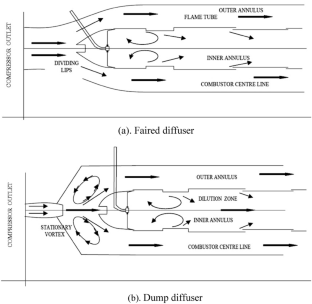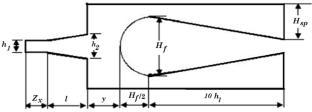Numerical Characterization on the Influence of Flame Tube Geometry and Dump Gap in the Diffuser Performance at High Altitudes
Abstract
In the present work, numerical investigation is carried out on the effect of dump gap and geometry in the performance characteristics of dump combustor diffuser. Dump gap ratio is the essential quantity that determines the losses and the radius of curvature of the flow at the exit plane. The effect of altitude on the pressure and temperature distributions of the dump diffuser is studied numerically through the SST k − ω turbulence model. A novel dome geometric shape optimization strategy is proposed adjacent to the flame tube head, and the effective flow pattern and pressure distribution caused by the dome shapes are analyzed using ANSYS. The dump gap ratio about 1.1 with optimized dome shapes offers better results as compared to the others in terms of static pressure recovery. The temperature and pressure distributions of the optimized geometry are validated with the existing state-of-the-art parametric studies, and the results are presented. Relevance of the work: the proposed numerical investigation on the influence of dump gap and flame tube geometry in the diffuser performance has several technical merits toward the core functions of a gas turbine engine specifically at high altitudes. The state-of-the-art pressure recovery retention mechanism can also be deployed for various physical flow environments to attain the specific values for the primitive variables as discussed in this article.



 求助内容:
求助内容: 应助结果提醒方式:
应助结果提醒方式:


